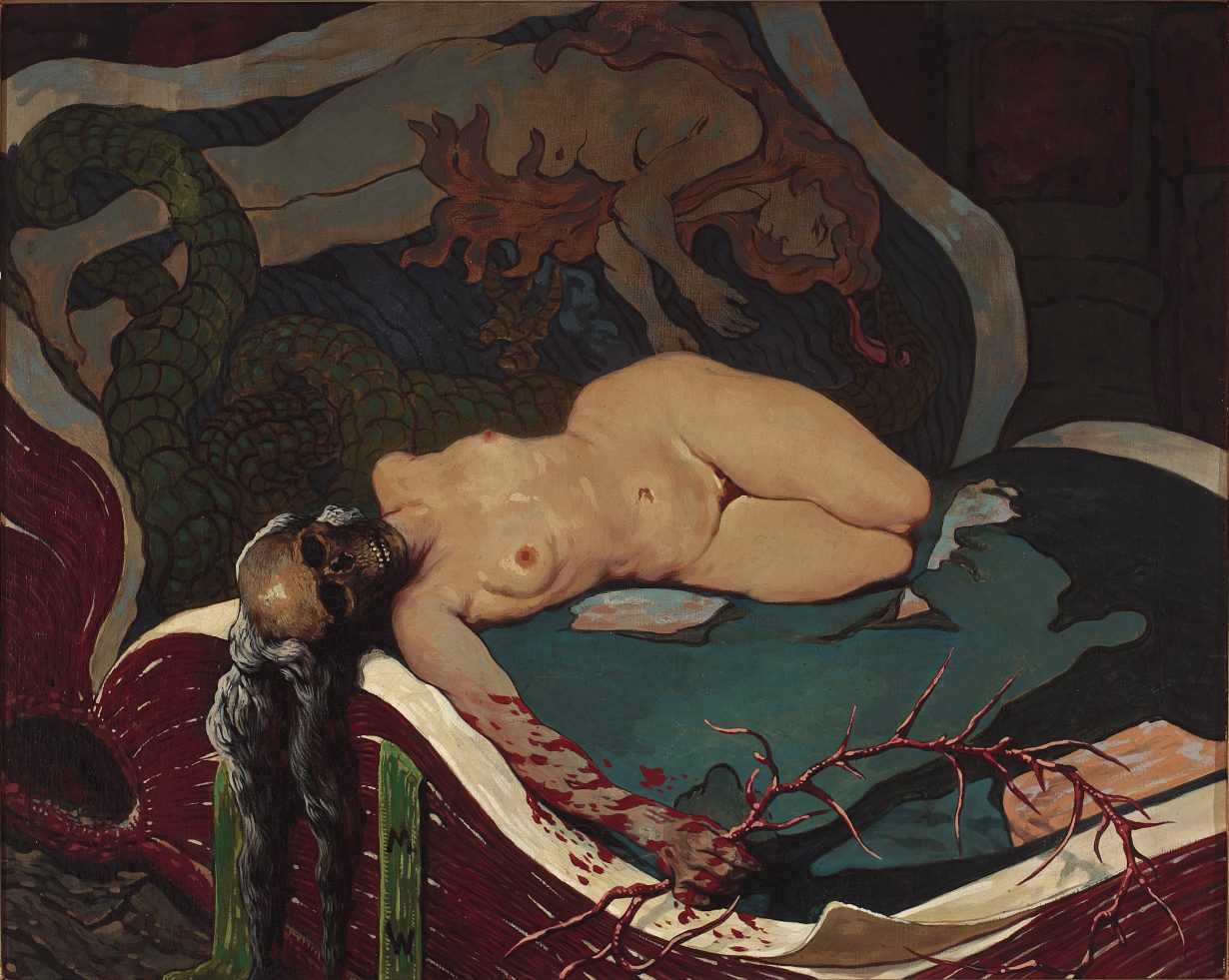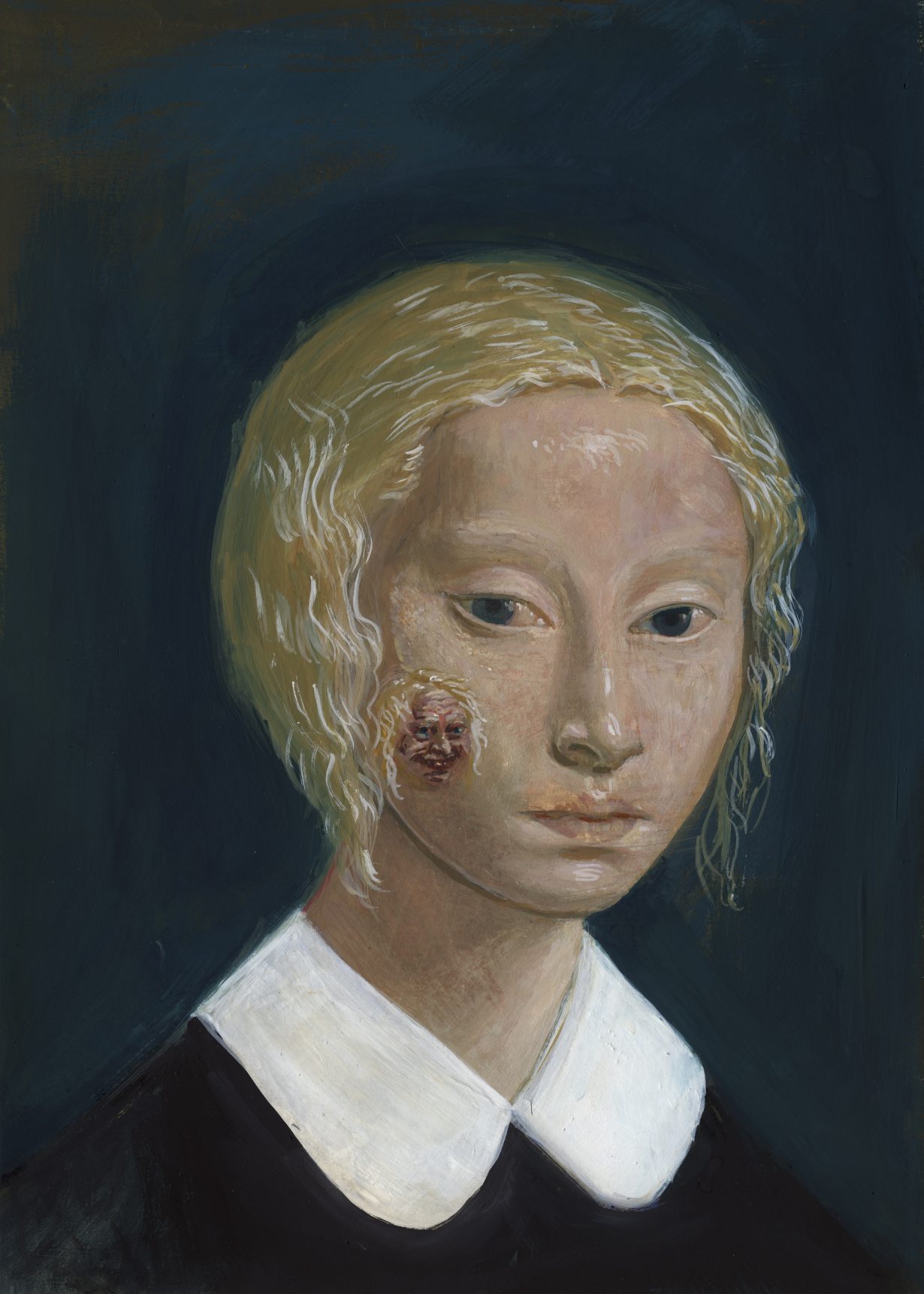The Dark Arts at Museum of Modern Art, Warsaw finds a trove of bewildering treasures in the history of Balto-Slavic symbolism
This transhistorical, feverish trip through Balto-Slavic symbolism centres on Aleksandra Waliszewska, a Polish painter in her forties, whose visions – always untitled – court a camp kind of horror: a man leaves a house made of raw, oozing flesh; a litter of demonic kittens erupts through the orifices of a girl’s face; a six-breasted spider-woman catches men in her web. Primarily executed in fine strokes and misty washes of gouache on paper, 132 works here conjure the intimacy of fairytale books, or cramped adolescent bedrooms and the tortured intensity fermenting therewithin. Woven into the install are another 80-plus works from the Middle Ages through to the 1970s, many from the symbolist period. This integration emphasises Waliszewska’s relationship to her predecessors and the historical and mythical pasts of Poland, Ukraine, the Czech Republic and Baltic states, with a clear individuation of these countries and their cultures signalling a pointed refusal of Russia’s imperialist pan-Slavic circumscription.
The curators never sneer at the artist’s – or symbolism’s – popular appeal: rather, through Waliszewska’s prism, they illuminate the possibilities afforded by this topography of swamps, sirens and vampires, exalting its potential to transgress ‘contemporary identity-politics discourses’. But variously grounded in symbolist, surrealist, expressionist, religious and outsider territory, the exhibition’s elders prove a tricky proposition. They seem ‘authentic’ – no matter that nostalgia for folk culture and mythology was as resonant circa 1900 as it is today – and often channel ‘authentic’ currents of ethnonationalism or female objectification. Waliszewska is presented as an antidote: her women slay Nazis in a ‘girl-power revision of history’ or embrace carnality while confronting the viewer instead of being passive vessels for ‘feminine evil’. Her female hybrid creatures apparently gobble up ‘the animal within’ cliché. These ideas evoke the ‘strong Polish woman’, channelling animalistic rage against very human indignities while still confirming a mythologised idea of Polish womanhood. Considering the scope that speculative realms afford, her figures fall short of transgressing the gender binary itself, where many feminists locate their battle. But Waliszewska has never claimed to be a feminist, and this is possibly where art and interpretation fork.

Also, where Waliszewska offers more interesting notes, they are often overwhelmed in the cacophony of works; especially by artists such as Marian Wawrzeniecki, whose icky painting Old Truth Lies in Books (1910) delivers a woman’s fleshy body with a skull for a head, collapsed upon an open book and gripping a bloody root while another female figure succumbs to a serpentlike coil. Furthermore, it is difficult to regard the hooked noses of Marian Henel’s creepy voyeurs and not consider anti-Semitism; or to note the trope of dark vs. light repeated in various artworks throughout (including Waliszewska’s); or to look at self-taught artist Bogdan Ziętek’s Monkey (undated), of a woman in her underwear, sat on the floor in an uninhibited pose – without wondering if those attacking ‘foreigners’ or cultivating incel fantasies could as easily find gratification amidst this exhibition as those benignly scrawling poetry by candlelight. Would the curators flinch at this or concur that such age-old depictions of horror and subjugation have deep, specific cadences that continue to resonate and aren’t easily stabilised for any specific audience? Is Waliszewska really serving something radically different, or does her work exemplify the kind of Balto-Slavic self-exoticisation that’s lapped up in the West? (Nick Cave, a fan, featured Waliszewska’s work on an album cover.)

As such, it’s worth considering how perspectives from West and East meet in such territory via the curatorial duo at the helm. Alison M. Gingeras, who devised the exhibition Dear Painter, Paint Me: Painting the Figure Since Late Picabia in 2003 at the Centre Pompidou (which predicted the latter-day elevation of figuration and realism, advanced by a vital reckoning with the dubious foundations of taste and elitism) curates alongside Natalia Sielewicz, whose 2019 survey of women painters, Paint, also known as Blood, featured Waliszewska among a generation who plumb a very Polish preoccupation with trouble through figuration.

Their curating also delivers moments of disquieting repose: for example, Bronisław Linke’s watercolour Pink Track (1948), an incongruously pink scar of railway track, thrumming through a barren landscape that speaks acutely to Holocaust trauma. Finally, when confronted with a painting by Czech artist Karel Šlenger, dated ‘1930s’ and titled Jellyfish (a ‘medusa’ in Slavic languages), which depicts a Bibendumesque-stylised woman surrounded by impish sea-creatures, hands on hips, her expression tantalisingly ambiguous yet challenging – all this executed in a brown palette redolent of ‘East European’ interiors – it is obvious that The Dark Arts couldn’t resist casting its net wide. In doing so, it has retrieved a trove of bewildering treasures.
The Dark Arts: Aleksandra Waliszewska and Symbolism from the East and North at Museum of Modern Art in Warsaw, through 2 October
